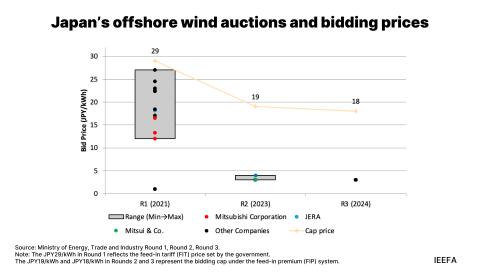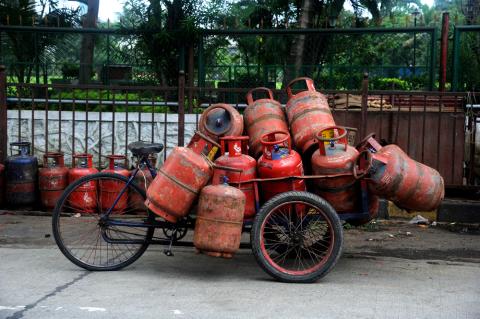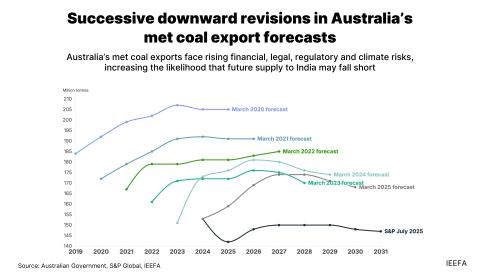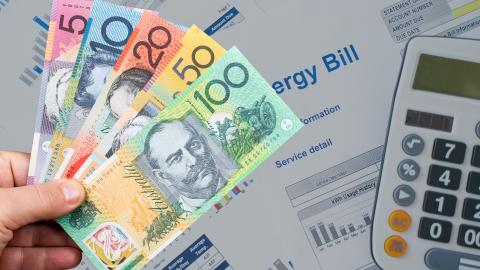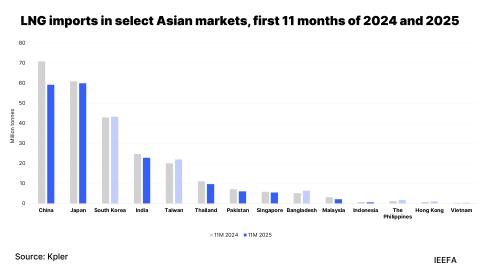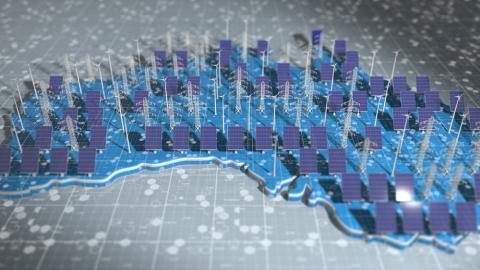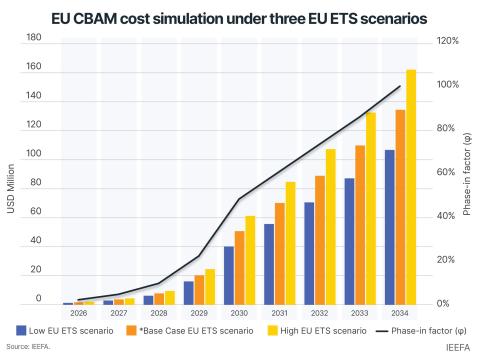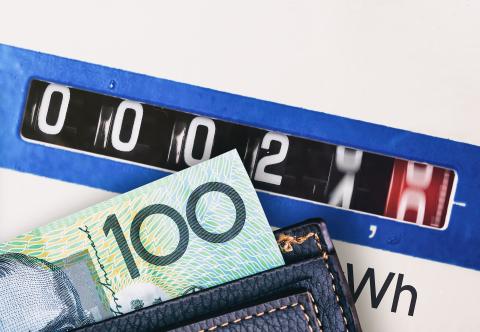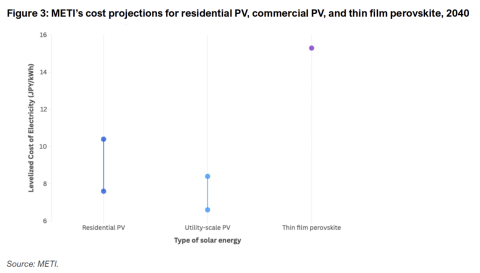Accelerating renewables investment in Indonesia: Shared use of the transmission network
Download Full Report
View Press Release
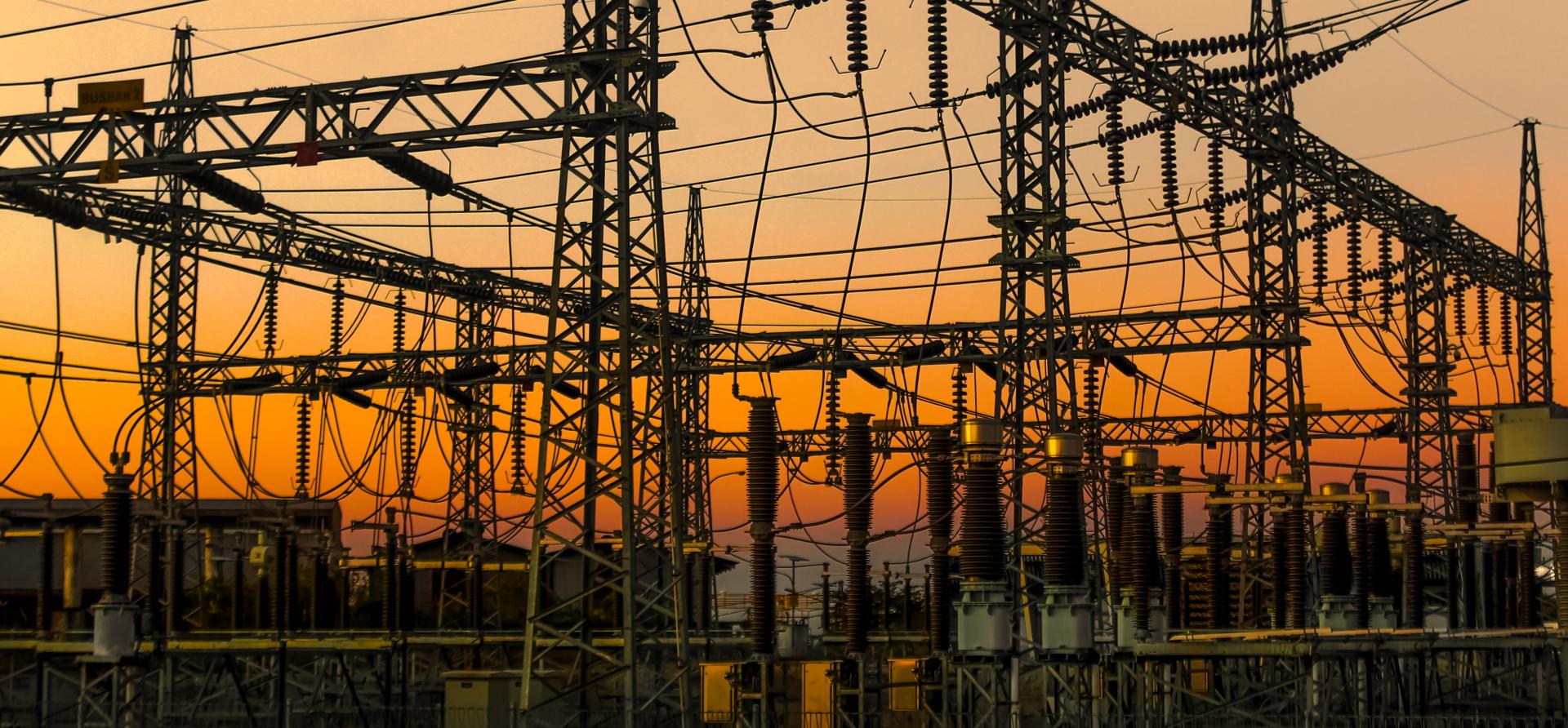
Key Findings
A joint transmission network utilization mechanism can offer Indonesia the opportunity to benefit the state utility PT Perusahaan Listrik Negara (PLN) and attract further investments without burdening the state budget. Key principles for this mechanism include transmission access, fair and transparent tariffs, reliable interconnections, and clear contractual agreements.
Renewable energy developers and consumers can contribute to grid expansion and reinforcement costs based on a transparent cost allocation formula, supporting PLN in financing necessary infrastructure upgrades.
PLN can establish an annual quota system to identify and plan network capacity for power wheeling, helping align transmission planning with renewable energy development.
The Government of Indonesia can consider establishing a separate subsidiary under PLN responsible for managing transmission operations, which would allow the transmission company to potentially become a separate fundraising vehicle.
Executive Summary
Accelerating Indonesia’s roll out of renewable electricity is essential to the country’s coal phase out plan, achieving its 2060 net zero target, and to usher in green economic growth as part of President Prabowo Subianto’s “Together Indonesia Advances Towards a Golden Indonesia 2045” vision.
As Indonesia strives to drive up its renewable generation capacity, with a target of an additional 75GW on the grid by 2040, the country must attract private investment to successfully accelerate its energy transition. Several energy policies aim to shape Indonesia’s direction between now and 2040 – the New and Renewable Energy Bill (RUU EBET), the National Energy Plan (KEN), and the state utility’s electricity supply business plan (PLN RUPTL). It’s critical that these initiatives boost renewable energy goals and attract more private investment in the country’s energy system.
There are two key barriers currently blocking corporate investment in Indonesia’s renewable future: the limited number of renewable procurement options open to companies, and the geographic distance between Indonesia’s rich renewable resources, which have sufficient scale to supply industrial centres, and the places where these companies are based.
The joint utilisation of transmission and distribution lines, globally known as power wheeling, offers a promising solution that could unlock significant private investment in renewables in Indonesia from large, international companies committed to using 100% renewable electricity. This includes the 130+ businesses in Climate Group’s RE100 campaign that operate in Indonesia, who represent 3TWh of electricity demand per year.
Joint transmission network utilisation is a scheme which allows non-utility stakeholders open, non-discriminatory access to public utility grid infrastructure, through which they can deliver electricity from private generation sources to private customers, subject to a transmission service charge. This approach enables different stakeholders to use grid infrastructure owned by the state electricity utility to deliver electricity from generation sources to load centres.
The current regulations and laws on the power supply business in Indonesia allow for a basic form of joint transmission network utilisation. However, structured correctly, this platform for corporate renewable procurement in Indonesia would be a win-win, helping corporates achieve their renewable energy targets, while offering a predictable, long-term revenue stream for PT Perusahaan Listrik Negara (PLN), the state utility. In this policy report, we outline how, with the right structure and incentives, PLN can lease its transmission lines to private sellers and buyers.
The recommendations in this report set out how this approach can help Indonesia meet its ambitious renewables targets and grid investment plans. In summary, we recommend that the Government of Indonesia and relevant ministries:
Integrate language supporting a regulated joint transmission network utilisation scheme into relevant national policies and plans:
• Incorporate language supporting a regulated joint transmission network utilisation scheme in the upcoming New and Renewable Energy Bill (RUU EBET). This scheme will facilitate new renewable energy supply under Articles 29A and 47A through network utilisation cooperation6.
• Integrate a joint transmission and utilisation scheme into PLN’s Electricity Supply Business Plan (RUPTL PLN). PLN’s RUPTL should be adapted to allow a regulated private party access to PLN’s transmission network.
Uphold the key principles of the market and ensure PLN remains integral:
• Balance of electricity supply and demand whilst facilitating renewable electricity integration.
• Development of a fair and transparent cost structure for renewable and green services.
• Management of system planning and operation, including REC verification, cost transparency, and contractual complexities.
Under existing market regulations, develop and implement a joint transmission network utilisation scheme that has the following principles:
• Transmission access: Renewables developers should be able to connect facilities to industrial consumers via the national grid.
• Fair and transparent tariffs: Transmission tariffs should reflect true service costs without bearing additional generation or distribution costs, and ideally be set by an independent regulator.
• Reliable interconnections: Renewables projects should be interconnected to the national grid within reasonable timeframes, at a reasonable cost, and in alignment with grid standards to minimise instances of curtailment.
• Clear contractual agreements: Generation companies should agree to minimum supply commitments, comply with grid codes, and contribute to balancing costs if necessary.
Work towards longer term regulatory transformation that maximises the potential of joint transmission network utilisation in Indonesia:
• Introduce upfront charges for grid strengthening and capacity enhancement. A transparently formulated, upfront transmission enhancement charge could support PLN to finance necessary infrastructure upgrades.
• Establish a quota system for joint transmission network utilisation and develop a comprehensive renewable electricity plan. An annual quota system would provide clarity for renewable developers and consumers, ensure efficient use of and clarity on transmission network capacity, support the stability of the electricity network, and lead to a more seamless integration of renewable energy sources into the grid.
• Create a separate transmission subsidiary and independent tariff regulator. The Government of Indonesia should consider the establishment of a separate subsidiary under PLN responsible for managing transmission operations, therefore creating a clearer company balance sheet, easier determination of transmission tariffs, and the possibility for the transmission company to become a separate fundraising vehicle.
As Indonesia’s neighbors, including Vietnam and Malaysia, introduce similar systems and mechanisms, enhancing their international competitiveness and driving renewables growth, Indonesia must act quickly on joint transmission network utilisation to remain an attractive market for foreign investment in the region.
Authors: Laura Thomas, Alex Miller, Alvin Sisdwinugraha, Deon Arinaldo, Mutya Yustika, Grant Hauber, Dwi Cahya Agung Saputra
Contributors: Hannah Broman, Toby Walker, Champa Patel



